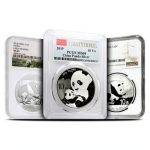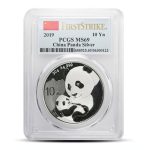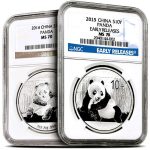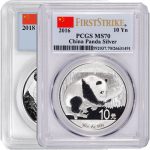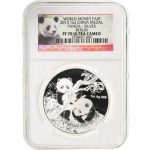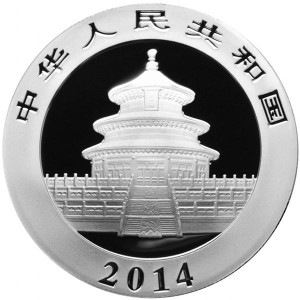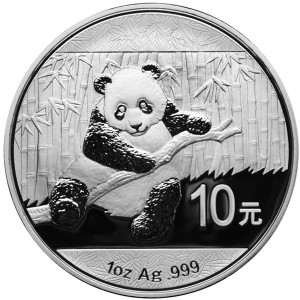Silver Chinese Pandas
30 Gram Silver Chinese Panda Coins (Random Year, Varied Condition)
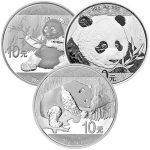
$37.29As low as $36.29
2023 30 Gram Silver Chinese Panda Coins (BU)

$41.99As low as $39.99
2024 30 Gram Silver Chinese Panda Coins (BU)
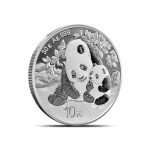
$42.18As low as $40.18
1 oz Silver Chinese Panda Coins (Random Year)
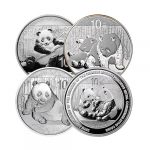
$40.19As low as $40.19
2022 30 Gram Silver Chinese Panda Coins (BU)
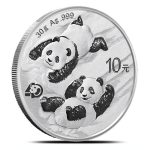
$43.20As low as $41.20
2015 1 oz Silver Chinese Panda Coins
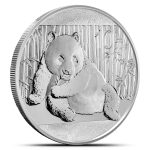
$46.19As low as $44.19
2018 30 Gram Silver Chinese Panda Coins
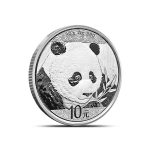
$49.19As low as $49.19
2023 30 Gram Colorized Silver Chinese Panda Coins (BU)
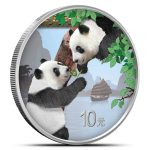
$58.66As low as $58.66
30 Gram Silver Chinese Panda Coins MS70 (Random Year, Varied Label, PCGS or NGC)
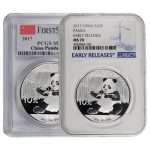
$61.30As low as $61.30
2024 30 Gram Silver Chinese Panda Coins (Gilded, BU)
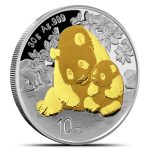
$62.29As low as $62.29
1 oz Silver Chinese Panda Coins PCGS MS70 (Random Year, Varied Label)
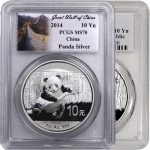
$88.30As low as $88.30
2004 1 oz Silver Chinese Panda Coins (Sealed)
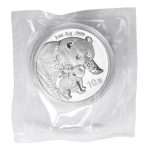
$128.29As low as $128.29
2002 1 oz Silver Chinese Panda Coins (Sealed)
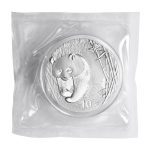
$128.29As low as $128.29
2024 30 Gram Silver Chinese Panda Day and Night Two-Coin Sets (BU, 500 Mintage, Box + CoA)
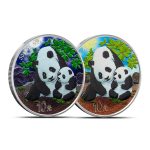
$163.46As low as $163.46
2023 150 Gram Silver Chinese Lunar Year of the Rabbit Rectangular Coins (Box + CoA)
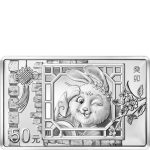
$533.69As low as $533.69
2023 1 Kilo Proof Silver Chinese Panda Coins
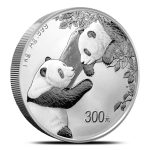
$1565.72As low as $1,565.72

Chinese Silver Pandas
Originating from the People’s Republic of China, Silver Chinese Pandas are both popular and celebrated. The coins have been around for decades, with each new mint and edition captivating both silver collectors and precious metal investors. Several mints issue the Chinese Silver Panda series, and in each year of mint, there is a new design. They typically range in the denomination and size, as well. This creates a versatile experience for people interested in acquiring the coin, either for collection or investment.
Popularity
To say that the Chinese Silver Panda series is popular is a vast understatement. At first, the Chinese Mint released only proofs because there were not many available, and circulation was understandably limited. The reaction, however, grew to such proportions with the success of each mint gaining steam, that soon the mints began creating bullion versions. As a result, proof versions of the earlier coins are extremely rare and considered valuable among collectors.
Year of Introduction
The Panda coin has been around since 1983, and 1983-1985 were the “proof quality” years. At that time, the coins contained 27 grams of silver at a 0.900 rate. During those three years, each edition saw mintages of just 10,000. There were no coins in 1986. It is possible that the mint itself realized how popular the Panda coins were around this time, and made the decision to move from proof to bullion versions. That occurred in the 1989 minting, while 1987 offered a slightly larger proof printing.
Differing Sizes
These days, the coins in the Silver Panda series are mostly comparable in size. However, there are some noticeable differences throughout the years. Typically the sizes range between 0.5 oz. to 1 kg.
In the first three years, the coins weighed 27 grams and had a diameter of 38.6 mm. Skipping a year to 1987, the diameter appeared to range between 38.6-40 mm., and the coin weighed in at 31.1 g. All coins in the following year were 40 mm. in diameter, but weights fluctuated slightly. The coins primarily weigh 31.1 g. now, but in some years they are slightly heavier. For example, the 1997 coin weighs 31.22 g., and the coins for 2012-2014 weighed 31.1035 g.
Notes on Purity
Since the early days, the Chinese Silver Pandas have seen a definite upswing in purity, which also adds to their appeal and popularity among both investors and numismatists. These days, each coin is pure silver. They contain a full troy ounce, and have a .999 purity.
Design Fundamentals
The history of the Silver Pandas is as interesting as the coins themselves. The fact that the coins were proofs in their first mintages makes them that much more valuable and intriguing. In their very design, they celebrate China’s rich spiritual culture, as well as its lush landscapes and beautiful native creatures. After all, the panda stands out as one of the most famous animals from the country, and the coins themselves are so artistically rendered that owning them is a real pleasure.
Obverse
True collectors and investors are just as interested in the obverse side of the coin, which is a testament to China’s culture. The obverse features Chinese characters at the top center. They translate to read, “People’s Republic of China.” At the bottom center of the coin, the mint year is clearly stamped. There are special markers for commemorative issue coins.
However, it’s the central design on the obverse that really pleases the eye. Beautifully rendered and exquisitely sketched, the Temple of Heaven takes center stage. The Temple of Heaven is an important religious complex of buildings in Beijing. Emperors from several dynasties have visited the temple, which dates back to the 15th century.
Reverse
The reverse side of the coin features a gorgeously rendered panda. There is also a face-value stamp, and stamped proof of the coin’s size and purity. From there, however, the similarities end.
Each year, the design of the panda changes. In 2014, for instance, an expressive panda perches on a limb, surrounded by grass and bamboo. The 2013 coin features three pandas drinking water, while the 2011 and 2012 coins depict a mother panda with her cub, though in different poses. The only two coins to have the same design are the coins minted in 2001 and 2002.
Mint Packaging
Mint packaging differs depending on the supplier and the preference of the buyer. Buying a single coin is simple, but there are also Monster Boxes. They contain 600 oz of silver (600 coins or 20 sheets containing 3o coins each). Capsule packaging has just one coin. Alternatively, buyers can buy sheets of 30 coins, which is a good mid-range option.


